Punic Wars Worksheets
Do you want to save dozens of hours in time? Get your evenings and weekends back? Be able to teach about the Punic Wars to your students?
Our worksheet bundle includes a fact file and printable worksheets and student activities. Perfect for both the classroom and homeschooling!
Resource Examples
Click any of the example images below to view a larger version.
Fact File
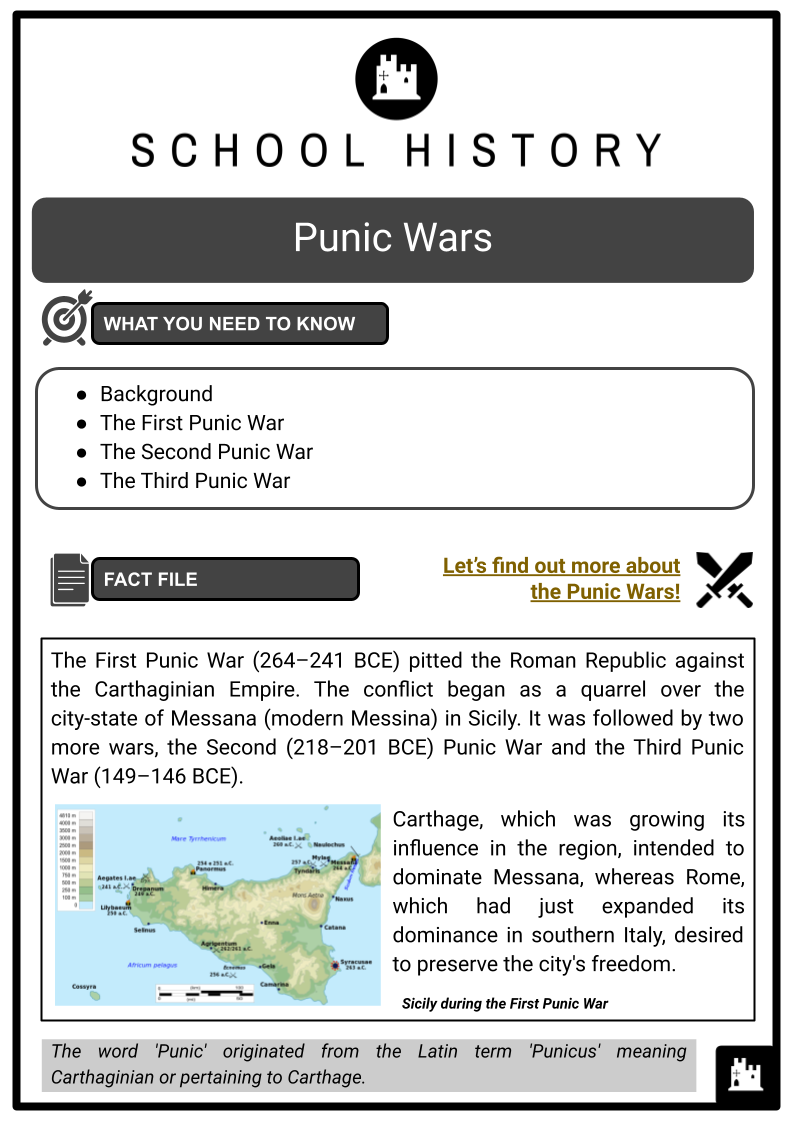
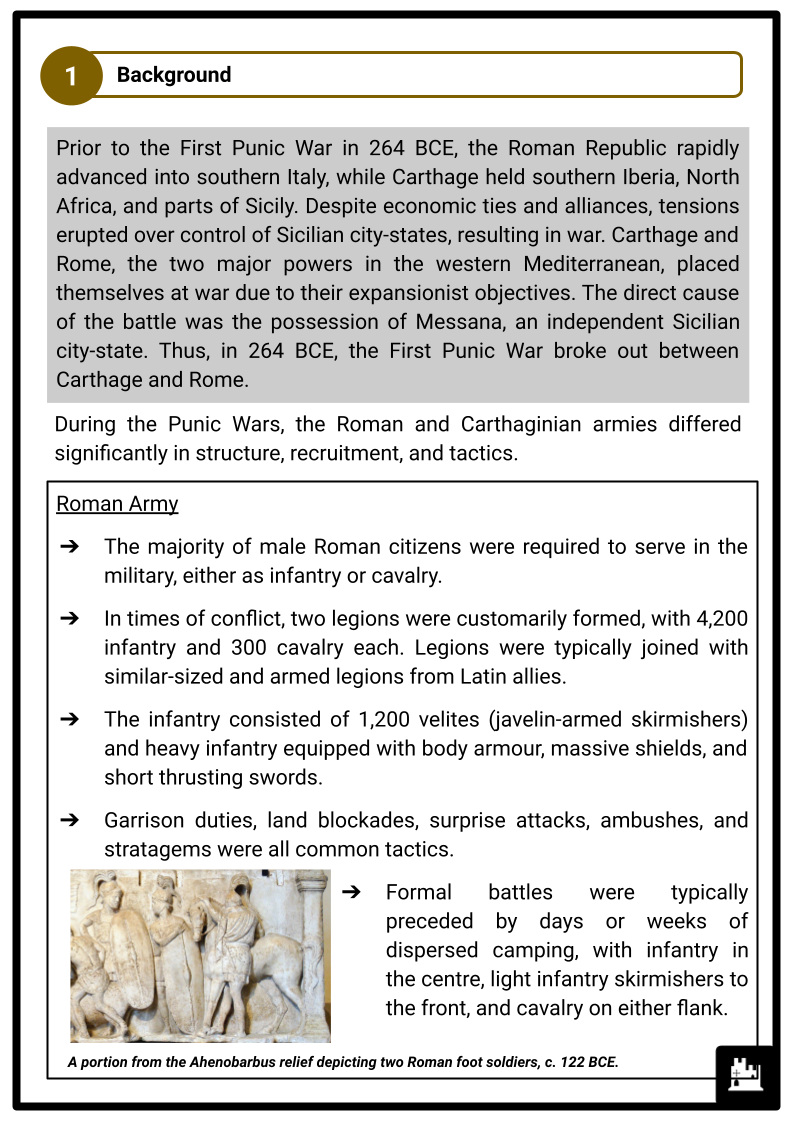
Student Activities
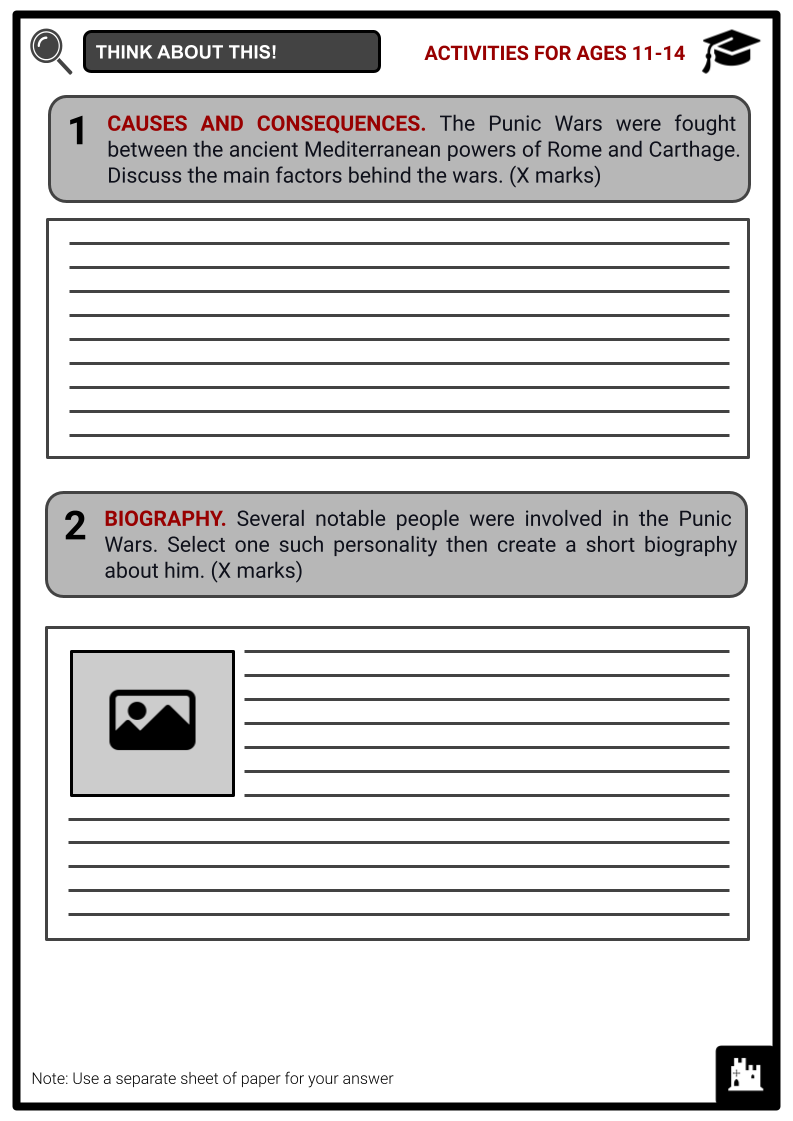
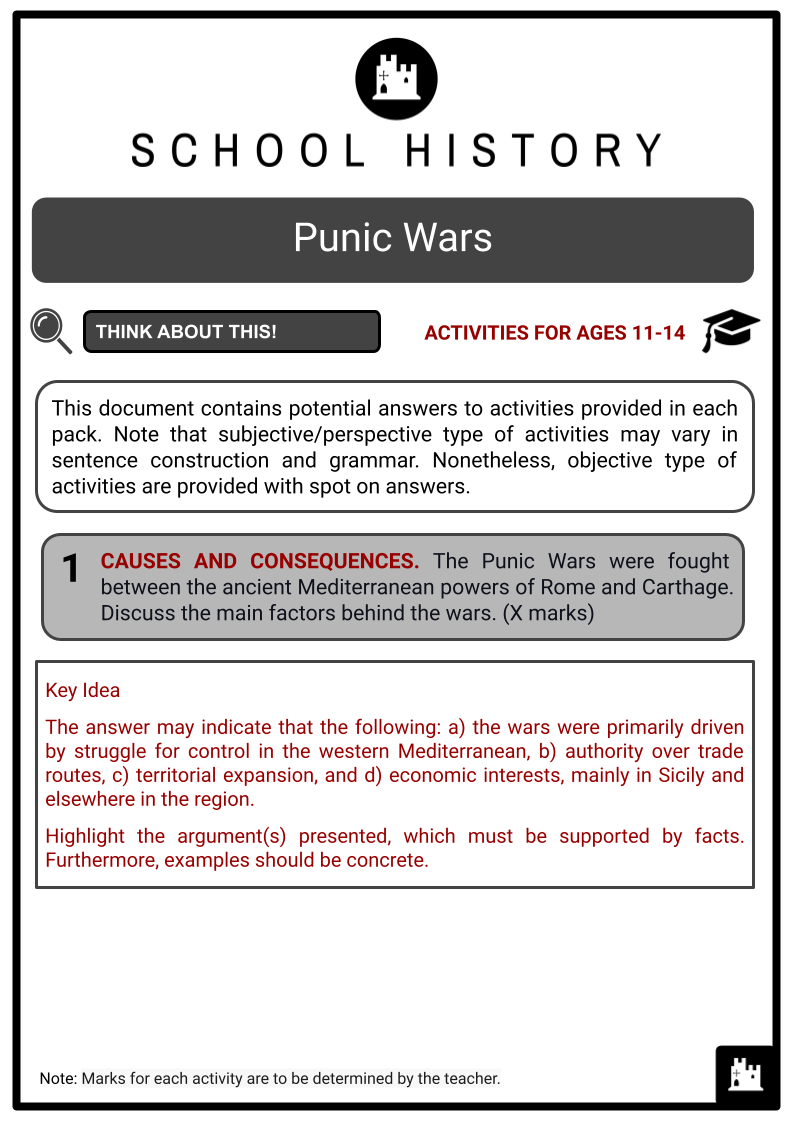
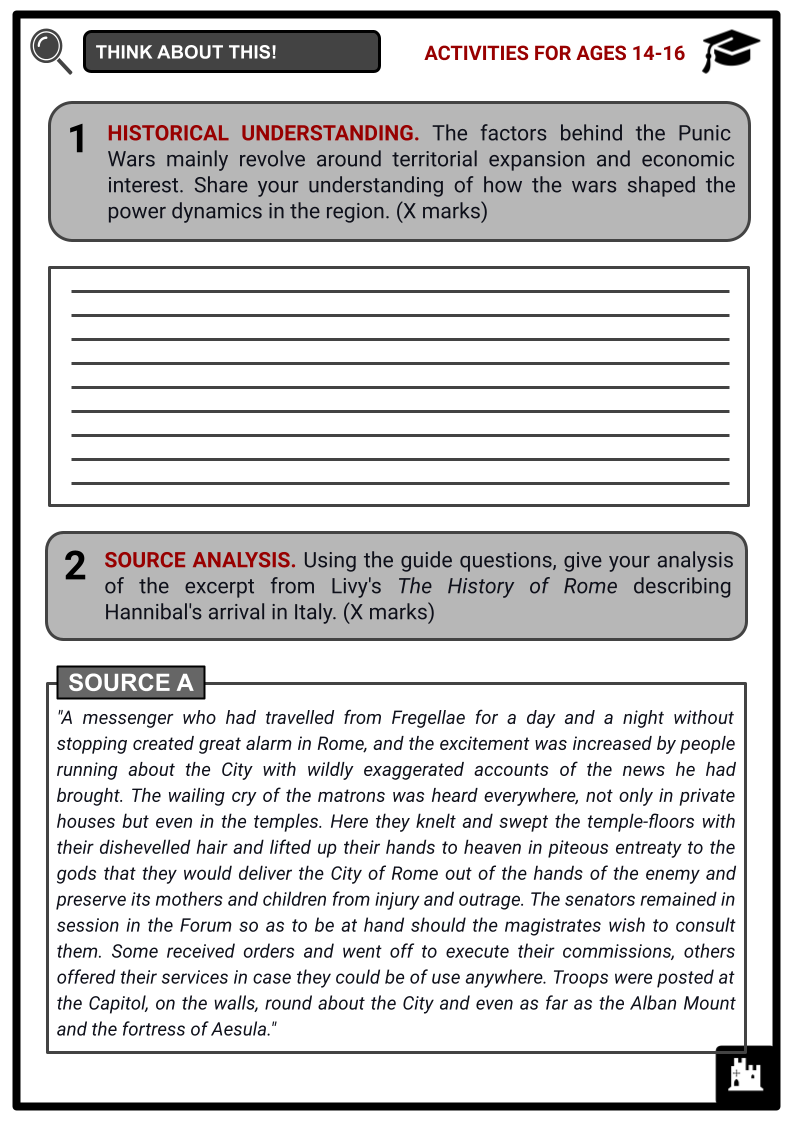
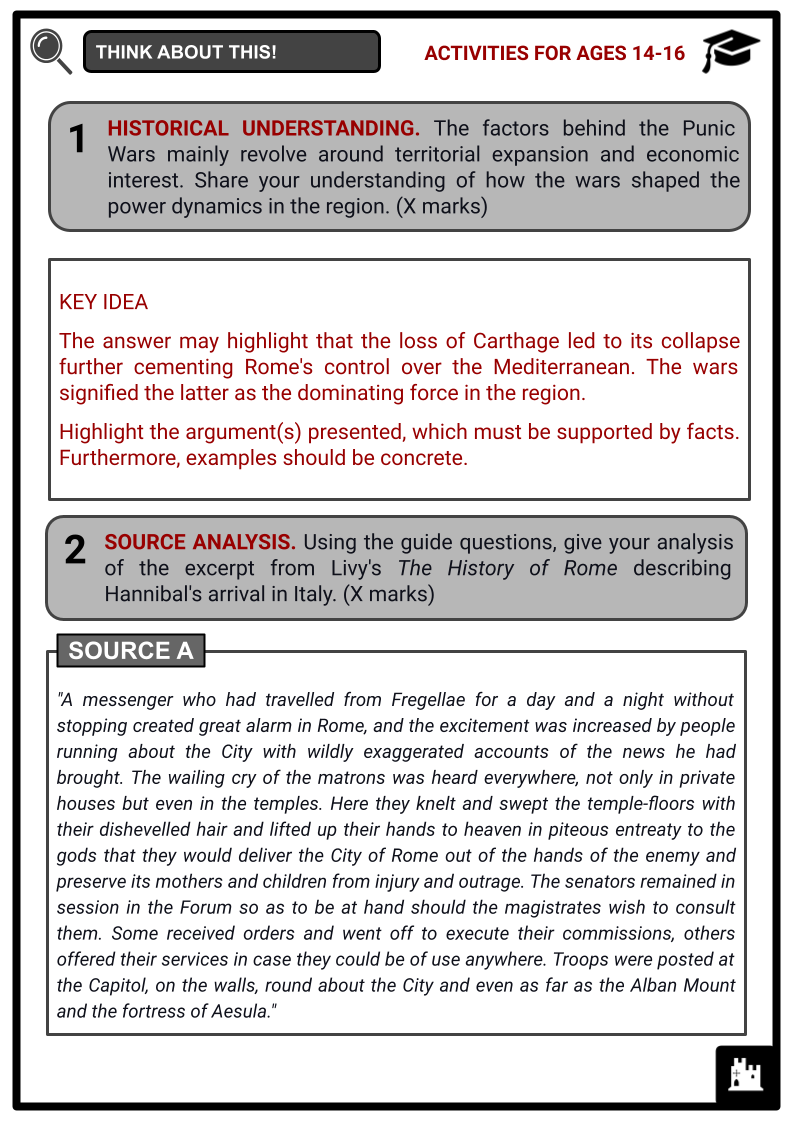
Summary
- Background
- The First Punic War
- The Second Punic War
- The Third Punic War
Key Facts And Information
Let’s find out more about the Punic Wars!
The First Punic War (264–241 BCE) pitted the Roman Republic against the Carthaginian Empire. The conflict began as a quarrel over the city-state of Messana (modern Messina) in Sicily. It was followed by two more wars, the Second (218–201 BCE) Punic War and the Third Punic War (149–146 BCE).
Carthage, which was growing its influence in the region, intended to dominate Messana, whereas Rome, which had just expanded its dominance in southern Italy, desired to preserve the city's freedom.
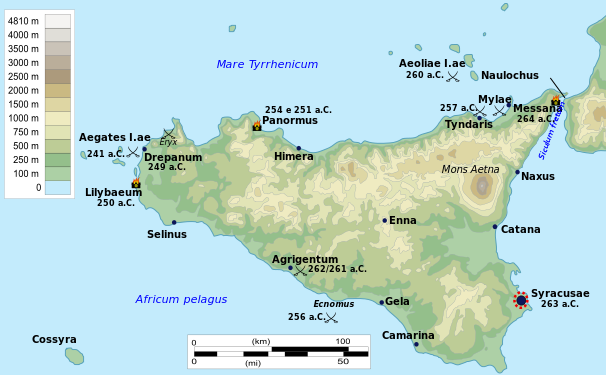
The word 'Punic' originated from the Latin term 'Punicus' meaning Carthaginian or pertaining to Carthage.
Background
- Prior to the First Punic War in 264 BCE, the Roman Republic rapidly advanced into southern Italy, while Carthage held southern Iberia, North Africa, and parts of Sicily. Despite economic ties and alliances, tensions erupted over control of Sicilian city-states, resulting in war.
- Carthage and Rome, the two major powers in the western Mediterranean, placed themselves at war due to their expansionist objectives. The direct cause of the battle was the possession of Messana, an independent Sicilian city-state. Thus, in 264 BCE, the First Punic War broke out between Carthage and Rome.
- During the Punic Wars, the Roman and Carthaginian armies differed significantly in structure, recruitment, and tactics.
Roman Army
-
- The majority of male Roman citizens were required to serve in the military, either as infantry or cavalry.
- In times of conflict, two legions were customarily formed, with 4,200 infantry and 300 cavalry each. Legions were typically joined with similar-sized and armed legions from Latin allies.
- The infantry consisted of 1,200 velites (javelin-armed skirmishers) and heavy infantry equipped with body armour, massive shields, and short thrusting swords.
- Garrison duties, land blockades, surprise attacks, ambushes, and stratagems were all common tactics.
- Formal battles were typically preceded by days or weeks of dispersed camping, with infantry in the centre, light infantry skirmishers to the front, and cavalry on either flank.
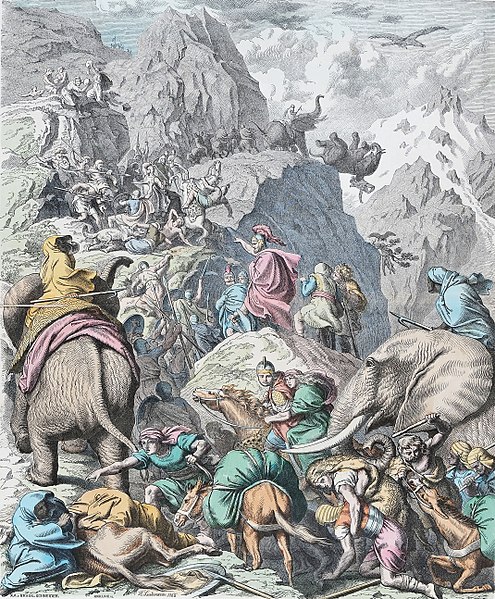
Carthaginian Army
-
- Citizens of Carthage enlisted in the army only in cases where Carthage was directly threatened.
- The army was primarily made up of foreign recruits, including North African soldiers, Iberians, Gauls, and Balearic slingers.
- War elephants were used specifically North African forest elephants.
- Infantry from Iberia and Gaul were unarmored, with a reputation for furious rushes but uneven battle performance.
- Garrison duties, land blockades, and official wars were typical tactics.
- Many infantrymen battled in a tightly packed phalanx formation.
- In terms of naval warfare, Quinqueremes, or "five-oarsmen" ships, were the core components of both Roman and Carthaginian fleets. It had a crew of 300, including 280 oarsmen, 20 deck crew, and 40-120 marines. Due to heavier shipbuilding and a lack of experience, the Romans began with slower and less manoeuvrable Quinqueremes.
- The Roman Corvus, a spiked bridge, was designed to allow legionaries to board and capture enemy ships, overcoming their lack of ship-maneuvering abilities. Prior to the Punic Wars, boarding had become more popular than ramming in naval conflicts, and the Corvus followed suit. It was later phased out due to its negative impact on manoeuvrability and seaworthiness, especially in rough sea conditions.
The First Punic War
- The First Punic War, which took place between Rome and Carthage from 264 and 241 BCE, was a crucial battle that made the former a dominant force in the Mediterranean. The majority of the conflict was fought in or around Sicily, where the rocky, hilly terrain encouraged defensive tactics and restricted ground operations to interdiction, sieges, and raids. Throughout the 23-year conflict, there were just two large-scale engagements in Sicily.
- The conflict began when the Romans forced Syracuse, an autonomous power, to form an alliance with them. Afterwards, they established a foothold on Sicily at Messana in 264 BCE, followed by the seizure of Carthage's principal base at Akragas on the south coast in 262 BCE.
- Following this, the battle on Sicily came to a halt as the Carthaginians concentrated on protecting their well-fortified towns and cities, while the Romans constructed a navy to rival Carthage's.
- The Romans used the Corvus to inflict severe damage at the Battle of Mylae in 260 BCE. They undertook an invasion of North Africa in 256 BCE, which was first successful but ultimately failed when a combined army of infantry, cavalry, and war elephants led by Spartan mercenary Xanthippus crushed the Romans at the Battle of Tunis.
- Several significant battles defined the war, including the Battle of the Aegates Islands (256 BCE), which decimated the Carthaginian fleet, and the Battle of Drepana (249 BCE), which killed Carthaginian general Hamilcar Barca, father of Hannibal and Hasdrubal Barca.
- The battles persisted, but neither side was able to achieve a significant advantage. In 243 BCE, the Romans rebuilt their fleet by contacting Rome's wealthiest citizens for loans to fund the building of one ship each. This newly formed navy successfully blockaded the Carthaginian garrisons. Carthage assembled a fleet to relieve them, but it was destroyed at the Battle of the Aegates Islands in 241 BCE, forcing the isolated Carthaginian troops on Sicily to negotiate for peace.
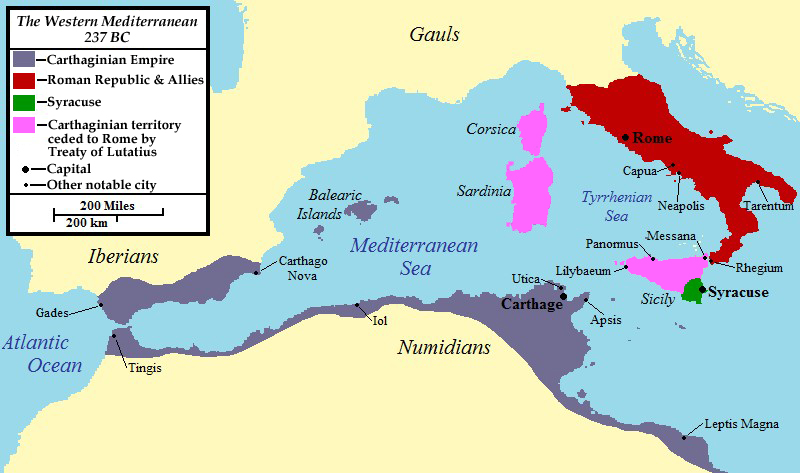
- The Treaty of Lutatius was signed, requiring Carthage to pay 3,200 talents of silver as reparations, and Sicily was acquired as a Roman province.
- The conflict had a tremendous impact on both countries, with Rome nearly bankrupt and a decrease in the number of adult male residents. However, the massive effort of continually building vast galley fleets during the conflict laid the groundwork for Rome's naval domination, which would last 600 years.
- Polybius, a Greek historian, described the First Punic War as a long and bitterly contested struggle that ultimately established Rome as the dominating military power in the western Mediterranean and laid the groundwork for its naval domination for generations.
The Second Punic War
- The Second Punic War, which occurred from 218 to 201 BCE, was fought between Rome and Carthage over three major military theatres: Italy, Iberia, and Africa. Carthaginian general Hannibal Barca constantly destroyed Roman legions in Italy, while his brother Hasdrubal Barca defended Carthaginian strongholds in Iberia with varied outcomes. The conflict ended in Africa, where the Romans invaded and crushed the Carthaginians in the Battle of Zama in 202 BCE.
- In 219 BCE, Hannibal invaded, seized, and sacked Saguntum, causing Rome to declare war on Carthage. Hannibal crossed the Alps into Italy in 218 BCE and destroyed Roman soldiers at the Battles of Ticinus, Trebia, and Lake Trasimene, rallying numerous Gallic tribes to his cause. The Roman dictator Quintus Fabius Maximus used a Fabian strategy of avoiding open conflict and skirmishing with small opposing detachments, which was unpopular but effective.
- The Battle of Cannae in 216 BCE was the biggest military disaster in Roman history, with an army of 86,000 nearly obliterated. Hannibal's army grew to 50,000, but he was unable to conquer key Roman cities due to their formidable fortifications and the loyalty of most Roman allies. By 207 BCE, the Romans had amassed 22 legions and confined Hannibal to Italy's farthest south.
- In Iberia, the Romans gained the backing of native tribes and conquered key cities, notably Cartago Nova in 209 BCE. The Carthaginians were defeated in the Battle of Ilipa in 206 BCE after suffering massive casualties and the loss of key commanders.
- In Africa, the Romans were joined with Numidian ruler Syphax, who fought Carthaginian ally Gala, a Berber ruler of the eastern Numidian tribe in North Africa known as the Massylii.
- In 206 BCE, the Carthaginians divided many Numidian kingdoms with Syphax, putting a stop to the continuous drain of their resources. By 205 BCE, Publius Cornelius Scipio was appointed command of the legions in Sicily and authorised to recruit recruits for his plan to conclude the war with an invasion of Africa. After arriving in Africa in 204 BCE, Scipio was joined by Masinissa, the son of Gala, who switched sides and a contingent of Numidian cavalry. Scipio fought and defeated two massive Carthaginian armies before seizing the majority of Syphax's domain with Roman assistance.
- Rome and Carthage began peace discussions, but Carthage rejected the proposed treaty owing to mistrust and a boost in confidence, on their part, when Hannibal arrived from Italy.
- The crucial Battle of Zama, fought in October 202 BCE, saw the Romans defeat the Carthaginians, effectively ending the war. The new peace pact deprived Carthage of its foreign holdings and imposed an indemnity of 10,000 silver talents, which severely limited Carthage's military capabilities and imperial ambitions.
- Throughout the conflict, both Rome and Carthage faced tremendous logistical and strategic problems, with Rome's efficient logistics infrastructure playing an important part in its eventual victory. The war's outcome placed Rome as the dominating power in the Mediterranean region, paving the way for further expansion and conquests.
The Third Punic War
- Rome and Carthage fought the Third Punic War from 149 to 146 BCE, which ended with Carthage's total annihilation. In 149 BCE, a Roman army of 50,000 men ordered that Carthage surrender all of its weapons and to move its territory away from the sea. When the Carthaginians refused, the Romans besieged the city, but they were unable to make significant progress due to the Carthaginians' strong walls and fierce resistance.
- In 147 BCE, Scipio Aemilianus was elected consul and assumed command of the war. The Carthaginians resisted, but the Romans gained a footing on the defences near the harbour. Scipio launched a strong assault, taking the city's main plaza and systematically moving into the residential district, killing everyone they found and setting fire to the buildings behind them. It took six days to rid the city of resistance, and Rome conquered the remaining Carthaginian territory, which became the Roman province of Africa.
- The fall of Carthage signified the end of its political and military power, as well as Rome's complete dominance in the western Mediterranean. Julius Caesar later rebuilt Carthage as a Roman metropolis, and it became one of the most important cities in Roman Africa. The war revealed Rome's readiness to fully destroy its opponents, setting the stage for future conflicts while also confirming Rome's position as a dominant power in the Mediterranean.
Frequently Asked Questions
- What were the Punic Wars?
The Punic Wars were a series of three major conflicts fought between the ancient Mediterranean powers of Rome and Carthage. These wars spanned over a century, from 264 BCE to 146 BCE, and were primarily fought for control over trade routes, territory, and dominance in the Western Mediterranean.
- What caused the Punic Wars?
The primary causes of the Punic Wars were rivalry and competition for power, trade, and influence between Rome and Carthage. Control over the strategic island of Sicily and disputes over trade routes in the Mediterranean also contributed to the tensions between the two powers.
- What were the outcomes of the Punic Wars?
The outcome of the Punic Wars was Rome's complete defeat of Carthage, resulting in the establishment of Roman hegemony over the Western Mediterranean. Carthage was forced to cede territories, pay heavy reparations, and accept Roman control over its foreign policy.
